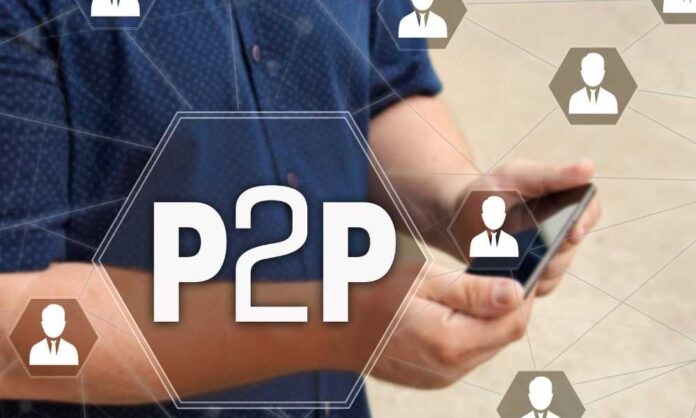When it comes to functionality and productivity, the digital revolution has had a significant impact on a variety of businesses. The financial sector is no longer an exception to this. People won’t use banking institutions for various financial transactions in the future. People will instead use (peer-to-peer) P2P Payment Apps online.
Numerous sizable enterprises are currently using sophisticated P2P payment solutions provided by mobile app development companies. Globally, downloads of the top 10 P2P payment apps climbed by around 12% to a total of 235.44 million across the iOS App Store and Google Play Store. This sum has increased by 32.3% since two years ago. The most popular app was Google Pay, but PayPal replaced it as the market leader.
WHAT ARE P2P Payment Apps?
With the aid of a program known as a peer-to-peer application, the peer-to-peer payment system serves as a mediator to assist a person in transferring money from their bank account to another person’s bank account. P2P Payment Apps have become extremely popular among young people, who are typically more trusting of exchanging their financial information with outside software than the older, less tech-savvy generation.
You set up your account and connect it to your bank or credit card. Additionally, you can transfer money to another person using their email, phone, or account. Usually, the mobile app development company uses passwords or additional information about a sender and a recipient to confirm a transaction’s validity.
P2P networks allow money transfers between holders of different bank cards without the use of middlemen, which saves you money on commissions. These apps are frequently accessible; however, there can be modest costs depending on where your money comes from.
TYPES OF P2P PAYMENT APPS
1. Standalone Services
These specific online mobile payment apps are independent of banks and have their own system for handling and keeping the money without any connection to other financial institutions. Each one of them has a wallet feature that allows users to store money before depositing it in a bank account or sending it to friends.
Since its establishment, PayPal’s user base has expanded to more than 202 countries, where millions of users conduct thousands of transactions annually, typically using 100 different currencies.
2. Bank Centric
Bank-centric peer-to-peer payment apps are peer-to-peer programs that include a bank as one of the parties in the transactions. This category can be additionally separated into two types. One, where each bank has a separate mobile app. Second, peer-to-peer payment that transfer money via various financial sector organizations like credit unions, a company that provides financial security, financial institutions, and partner banks.
One of the safest platforms ever created by reputable US banking institutions, Zelle complies with all banking sector safety regulations.
3. Social media Centric
Another category to take into account while creating mobile payment apps is social media-focused apps. These mobile apps, which the social media behemoths released, let users transfer money using their credit or debit cards without leaving the network. SnapCash, Softcard, and Google Pay are a few examples.
HOW TO BUILD A P2P Payment Apps?
1. Select a P2P software type
Hire mobile app developers to first choose the P2P Payment Apps type from the available preferred services, such as banking and standalone solutions. In addition to these, you can create apps that accept real-time payments.
2. Put the mobile platform first
You can select between developing an iOS or Android app if you have app budget constraints. Knowing which platform your users prefer and having room to create one additional app version for different platforms are two benefits of prioritizing your mobile app development platform.
3. Set features for your P2P application
The features determine the success of your P2P app it offers. Start with the fundamentals and gradually introduce the USP’s core components. Include information about the path your users will take while utilizing the app. Select the appropriate technology stack as well.
4. An approachable UX design
Your P2P payment app’s user interface and UX design must be simple and clear. Try to keep in mind features that are simple to read because you don’t want your active users to waste time trying to figure out how everything works.
5. Security
Your P2P payment app development process must incorporate security protocols. Incorporate cyber security and data protection elements like a fingerprint, face recognition, scanners, etc. into your P2P app at the same time. For optimum compliance, make sure to use two-way authentication.
6. Testing
Another key stage in the creation of a P2P payment app is testing and quality assurance. Your team of quality assurance experts must carry out every testing procedure in order to find and solve defects as soon as they arise. Even so, you could need professionals to monitor the beta testing of your app’s p2p payment solutions.
7. Legal compliance with fintech
When creating a mobile payment application, PCI-DSS (Payment Card Industry-Data Security Standard) is a procedure that you must adhere to. To foster market openness and confidence, don’t forget to obtain a PCI-DSS certificate.
Take your time when making your decision because the software developers’ skills will determine the quality of your program. Peer-to-peer payment apps will have a bright future, so jump on board while you still can.

